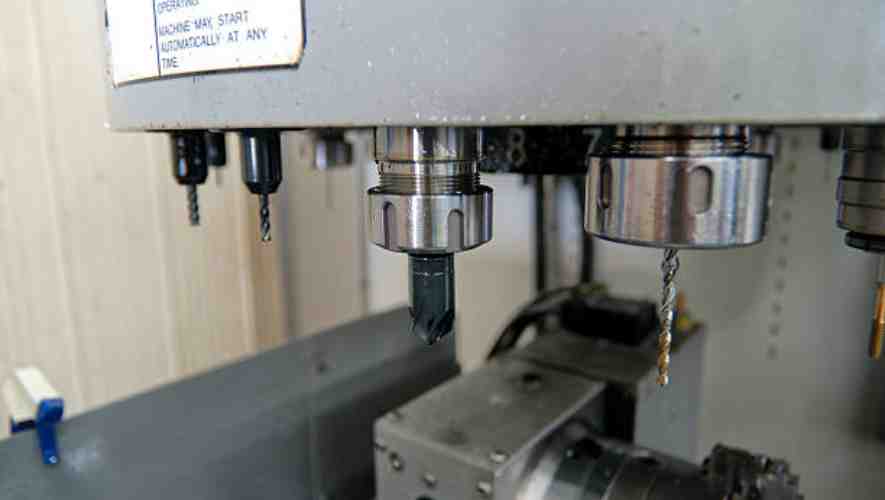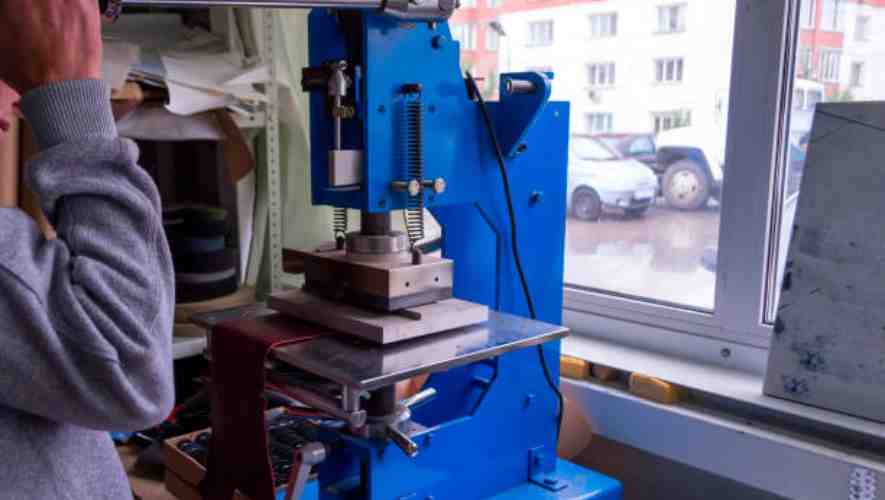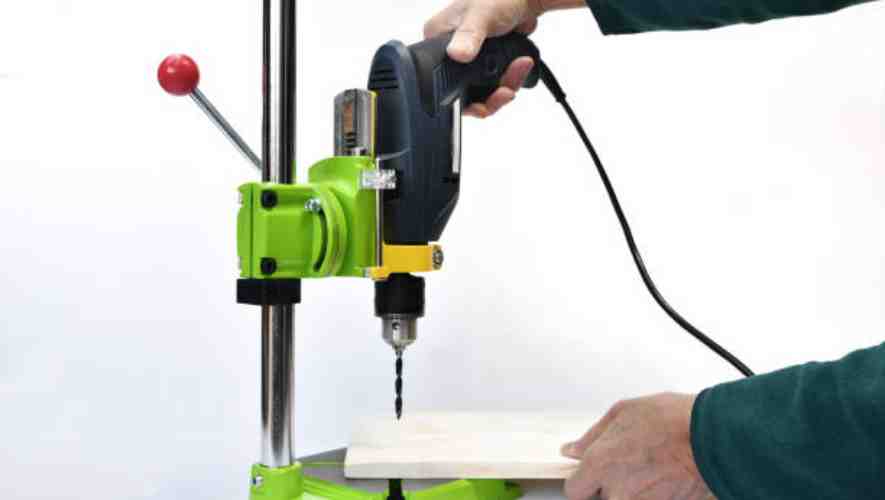When it comes to working with drill presses, one common question that arises is “how are drill presses measured?” This query often stems from the need to find the right drill press for specific projects or workspace constraints. Understanding the measurement criteria is crucial for both professionals and hobbyists to ensure they select a tool that meets their requirements for precision, capacity, and functionality.
How Are Drill Presses Measured? A drill press is typically measured by its swing, which is the distance from the center of the spindle to the closest edge of the pillar, multiplied by two. This measurement determines the maximum size of workpiece the drill press can handle.
The importance of knowing how to measure a drill press cannot be overstated. In this blog, we’ll delve into the details of drill press measurements, including aspects like throat distance and spindle travel, and how these dimensions affect the tool’s functionality. Whether you’re a seasoned woodworker or just starting out, understanding these measurements will help you make an informed decision, ensuring you get the most out of your drill press.
Basic Components and Terminology

Description of Key Components: Chuck, Spindle, Quill, and Table
The chuck is a pivotal component of the drill press, serving as the clamp that holds the drill bit in place during operation. It’s often key-operated or keyless, allowing for quick changes of drill bits. The spindle, directly linked to the drill press’s motor, rotates the chuck and drill bit. It plays a critical role in determining the drill’s speed and torque.
The quill, a sleeve surrounding the spindle, facilitates vertical movement – either manually or through a motorized feed. Lastly, the table supports the material being drilled. It’s typically adjustable, allowing for precise positioning of the workpiece in relation to the drill bit.
Terminology Specific to Drill Presses (e.g., Stroke, Throat, Taper)
Drill presses come with unique terminology that is essential for their effective use. ‘Stroke’ refers to the maximum depth the quill can travel, directly influencing the depth of holes that can be drilled.
The ‘throat’ of the drill press denotes the distance from the spindle to the supporting column or framework, determining the maximum size of the workpiece that can be accommodated. ‘Taper’ is another critical term, indicating the shape of the connection between the spindle and the drill bit. Common tapers like the Morse taper ensure a snug fit, crucial for accurate drilling. Understanding these terms is key to leveraging the full capabilities of a drill press.
Understanding Drill Press Sizes and Classifications
Drill presses are categorized by size and classification, aiding in selecting the right one for specific tasks. Size is indicated by the ‘swing,’ which is twice the throat distance, representing the maximum diameter of the workpiece that can be drilled in the center.
Classifications range from bench-top models, suitable for light-duty tasks, to floor models designed for heavy-duty industrial work. The selection depends on factors like the material thickness, hole precision required, and the frequency of use. Knowing these classifications and sizes ensures a well-informed choice, aligning the drill press’s capabilities with the user’s needs.
Measurement of Physical Dimensions

Measuring Throat Distance and Swing
Throat distance and swing are critical dimensions in various tools and machines, particularly in drilling and milling equipment. The throat distance, measured from the column of the machine to the spindle, dictates the maximum width of the material that can be worked on.
Meanwhile, the swing measurement, often twice the throat distance, indicates the largest diameter of workpiece the machine can handle. Precise measurement of these dimensions is vital for ensuring accurate and safe operation, as it helps in selecting the right equipment for specific tasks and materials, avoiding overextension and potential damage to both the machine and the workpiece.
Assessing Vertical Capacity: Distance Between Chuck and Table
The vertical capacity of equipment like drill presses and milling machines is determined by measuring the distance between the chuck and the table. This dimension is crucial for accommodating different sizes of workpieces and tools.
A larger distance allows for working on taller pieces, while a smaller one might limit the size but could offer more stability and precision. Accurate assessment of vertical capacity ensures that the machine can handle the required tasks without compromising on quality or safety. It’s a key factor in both machine selection and setup, as it influences the range of projects that can be undertaken.
Importance of Base Dimensions and Stability
The base dimensions of machinery play a pivotal role in maintaining stability and accuracy during operations. Larger base dimensions generally provide greater stability, which is essential for precision work, when dealing with large or heavy workpieces.
Stability is a critical factor in reducing vibration and ensuring consistent accuracy across operations. The footprint of the base affects the machine’s placement and the overall workspace layout. Understanding and measuring these dimensions help in creating an efficient and safe working environment, ensuring that the machinery is both accessible and securely anchored.
Technical Specifications and Performance Metrics

Horsepower and Motor Strength
The horsepower and motor strength of a machine are fundamental indicators of its capability to perform heavy-duty tasks. High horsepower denotes a stronger motor, which translates to the ability to handle more strenuous tasks without compromising on performance.
This metric is important in industries where machinery is expected to perform at high levels consistently. A robust motor not only enhances productivity but also ensures longevity and reliability, reducing downtime due to maintenance or motor failure.
Spindle Speeds and Range of Speed Adjustments
Spindle speed, measured in revolutions per minute (RPM), is a critical factor in machining operations. The range of speed adjustments available on a machine dictates its versatility in handling different materials and tasks.
Machines with a wide range of speed settings offer greater flexibility, allowing for precision in various operations, from cutting delicate materials to handling robust, dense substances. The ability to adjust speeds easily and accurately is essential for maintaining the quality and consistency of the work.
Precision Metrics: Accuracy, Tolerances, and Runout
Precision metrics, including accuracy, tolerances, and runout, are key to the performance of precision machinery. Accuracy refers to the degree to which a machine’s output conforms to the desired measurements, while tolerance denotes the permissible limit of variation in a physical dimension.
Runout, which measures the deviation from a perfect rotation, is critical in applications where circular motions are involved. High precision in these metrics is vital in industries where minute discrepancies can lead to significant errors, impacting the quality and safety of the final product.
Evaluating Drill Press Accessories and Attachments

Types of Drill Bits and Their Measurement Criteria
Drill bits are the cornerstone of the drill press’s functionality, coming in various types such as twist bits, spade bits, and Forstner bits, each designed for specific materials and drilling needs. The measurement criteria for these bits are critical, encompassing dimensions like diameter, length, and angle of the tip.
These parameters are essential for precision drilling, as they directly impact the size and quality of the holes drilled. Understanding these measurements helps in selecting the right bit for a specific task, ensuring both efficiency and accuracy.
Measuring the Impact of Additional Accessories (e.g., Vises, Stands)
Accessories like vises and stands play a pivotal role in enhancing the capabilities of a drill press. Visually, a vise secures the workpiece, ensuring stability and precision, while a stand provides a sturdy base for the drill press.
The impact of these accessories is measurable in terms of improved accuracy, reduced error margins, and enhanced safety.. They contribute to the versatility of the drill press, allowing it to handle a wider range of workpieces and drilling tasks with greater precision and ease.
Compatibility and Interchangeability of Attachments
The compatibility and interchangeability of attachments are crucial factors in maximizing the utility of a drill press. This involves assessing whether certain attachments can be used with different models or brands of drill presses. Compatibility ensures that the attachments can be securely fitted and operated with the press, while interchangeability offers flexibility and cost-effectiveness, allowing users to utilize the same attachments across various machines. Understanding these aspects helps in making informed decisions about purchasing and utilizing drill press attachments, leading to a more efficient and adaptable workshop setup.
Conclusion
In summary, the key measurement of a drill press is its swing, the double of the distance from the spindle’s center to the pillar’s edge, determining the maximum size of the workpiece it can handle.
To conclude, selecting the right drill press involves more than just considering its power or brand. Understanding how drill presses are measured is fundamental. This knowledge not only ensures that you choose a drill press that fits your workspace but also one that can accommodate the size and scope of your projects. Remember, a well-chosen drill press is an investment in your craftsmanship, enhancing both the quality and efficiency of your work. So, take this information, apply it to your search for the perfect drill press, and embark on your projects with confidence and precision

